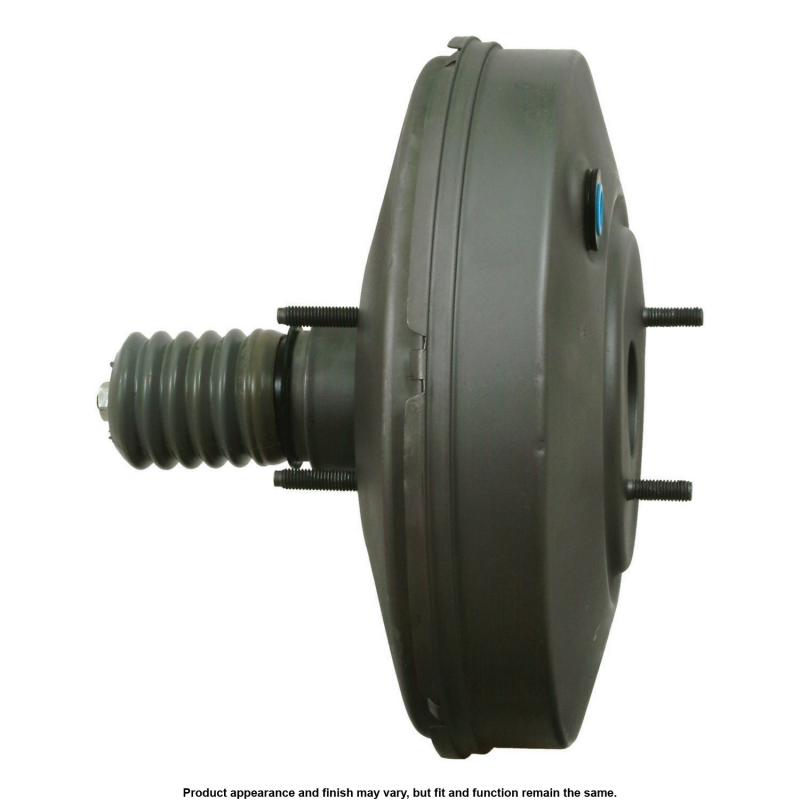A1 Cardone 54-77121 Power Brake Booster








Remanufactured Vacuum Power Brake Booster
$177.46 CAD
Core charge: $55.80
Out of Stock
Brand: A1 Cardone
Stock #: 5477121
UPC: 082617968874
Weight: 6.21 lb.(2.82 kg.)
Dimensions: 12.1" x 12.1" x 15.4" (30.8 cm x 30.8 cm x 39.1 cm)
Accepted Payments: Visa, MasterCard, PayPal
Buyer fitment guide only intended as reference. Please use catalogue search by vehicle to ensure proper fitment.
- DuraGo 29594006
- MPA WH590267
- WJB WA513351
- DuraGo 29594006
- Mercury AE5Z2005B
- Ford AE5Z2005B
- Lincoln AE5Z2005B
- CARDONE Remanufactured Vacuum Brake Boosters, Hydro-Vac Boosters, and Hydraulic Boosters, offer your vehicle reliable stopping performance, every time. Each unit is reverse engineered, based off 40 years of CARDONE Engineering expertise, where original design weaknesses are identified, corrected and where applicable upgraded to provide a more durable part then the original unit. Every unit is remanufactured to meet or exceed OEM performance, providing a quality product both you and your vehicle rely on.
- Guaranteed fit and function.
- Meets or exceeds O.E. performance.
- 100% O.E. quality seals, diaphragms and check valves are installed on every unit for like-new performance and reliability.
- All units are 100% tested to ensure reliable performance.
- Exclusive rust-prohibitive finishing process extends unit life.
- Master cylinder output rods are pre-adjusted (when included) for easier and faster installation.
- New mounting nuts and washers ensure proper, hassle-free installation.
| Stud Thread Size | M8X1.25 |
| Package Contents | Booster; Instruction Sheet; Seal Kit |
| Product Condition | Remanufactured |
| E-Waste | No |
| Prop 65 | No |
| SDS Required | No |
| Is item a chemical? | No |
| Contains Electronic Components? | No |
| Is or contains a battery? | No |
| Is or contains a bulb? | No |
| Is the item CARB affected? | No |
| FAQ_Q1 | What does a Brake booster do? |
| FAA_A1 | A brake booster assists in pushing the master cylinder piston when the brakes are applied. This multiplies pedal force to decrease stopping distances. |
| FAQ_Q2 | How much vacuum does a brake booster need? |
| FAA_A2 | For proper functionality, a brake booster will need a consistent supply of 18-21 inches of vacuum. |
| FAQ_Q3 | How can I test my brake booster for proper functionality? |
| FAA_A3 | With the engine off, pump the brake pedal until it feels firm and hold. Then, start the engine and the pedal will sink slightly if the booster is operating properly. |
| FAQ_Q4 | What causes multiple booster failure? |
| FAA_A4 | Fuel and oil vapors can enter the vehicle’s PCV system. These vapors will prematurely deteriorate the brake booster’s internal diaphragm. |
| FAQ_Q5 | Why do my brake lights remain illuminated after installing my replacement brake booster? |
| FAA_A5 | After replacing a brake booster, it may be necessary to adjust the brake light switch. Some vehicles contain a one-time use brake light switch. In these cases, the brake light switch will need to be replaced. |
| FAQ_Q6 | Can I use a brake booster from a different application? |
| FAA_A6 | No, brake boosters are application specific. Most will have different master cylinder and firewall mounting spreads. |
| FAQ_Q7 | What is brake pedal free play? |
| FAA_A7 | Brake pedal free play is a measurement of how far the brake pedal moves before the master cylinder first begins engagement. Some vehicles will require an adjustment. Please refer to your vehicle’s service manual. |
| FAQ_Q8 | Why is fluid present between my master cylinder and brake booster? |
| FAA_A8 | This is due to a failing master cylinder piston seal. This will result in brake fluid entering and contaminating the brake booster. The master cylinder and brake booster will need to be replaced. |
| FAQ_Q9 | Why do I have less than 18 inches of vacuum supplied to my brake booster? |
| FAA_A9 | A common cause is a restricted vacuum hose. If the vacuum line is free flowing, there could be more extensive engine damage or wear. Engine vacuum also fluctuates based on altitude. Please refer to the O.E. specification for your vehicle. |
| FAQ_Q10 | How can I identify my brake booster? |
| FAA_A10 | The most common way to identify the brake booster is by the vehicle application. However, most brake boosters have a pedal rod identification number stamped on the end of the rod. This can helpful in identifying the correct replacement brake booster. |
| UPC | 082617968874 |
| Origin Country: | MX |
| Weight: | 6.21Lb. (2.82 kg.) |
| Package Dimensions: | 12.1" x 12.1" x 15.4" (30.8 cm x 30.8 cm x 39.1 cm) |
1 Year Warranty
